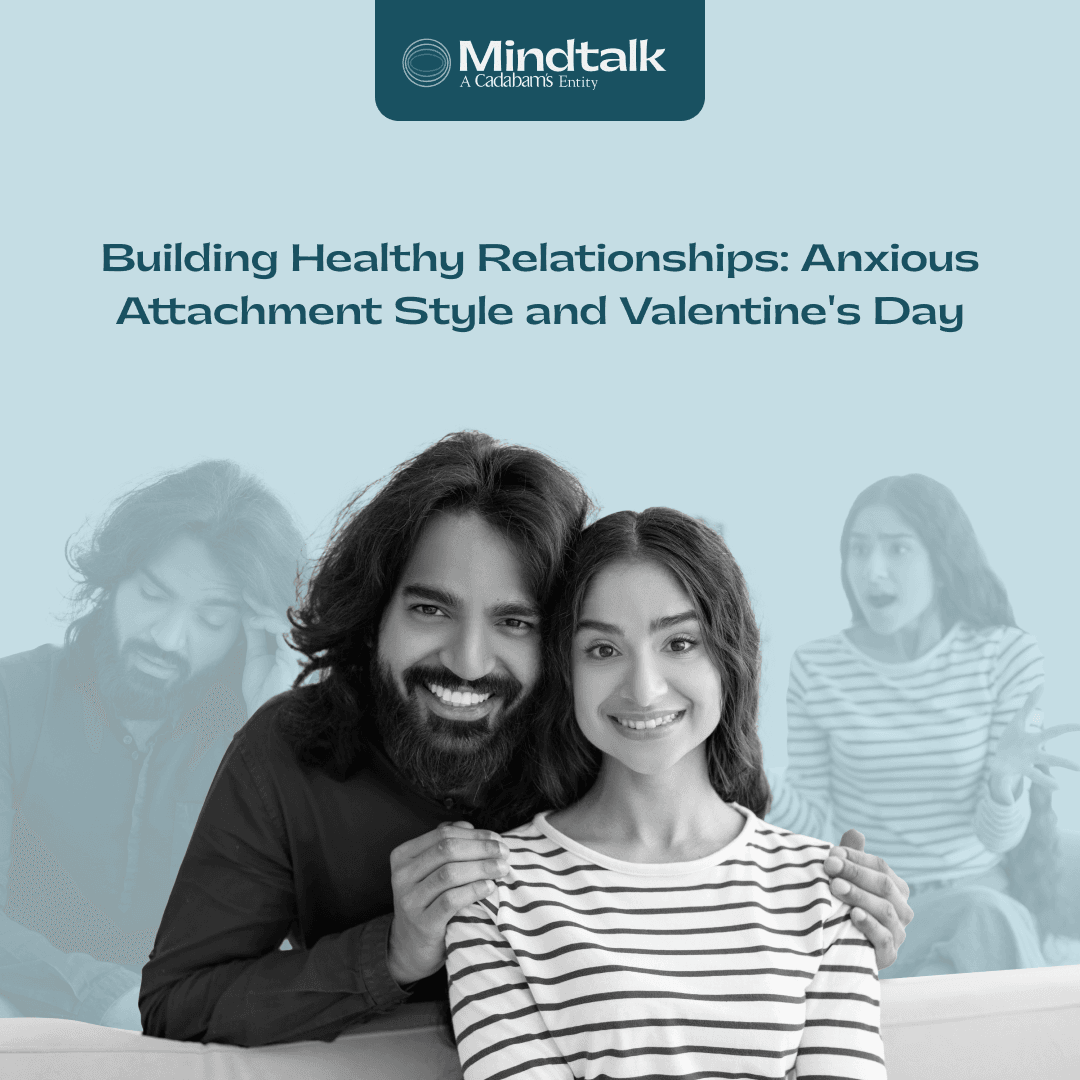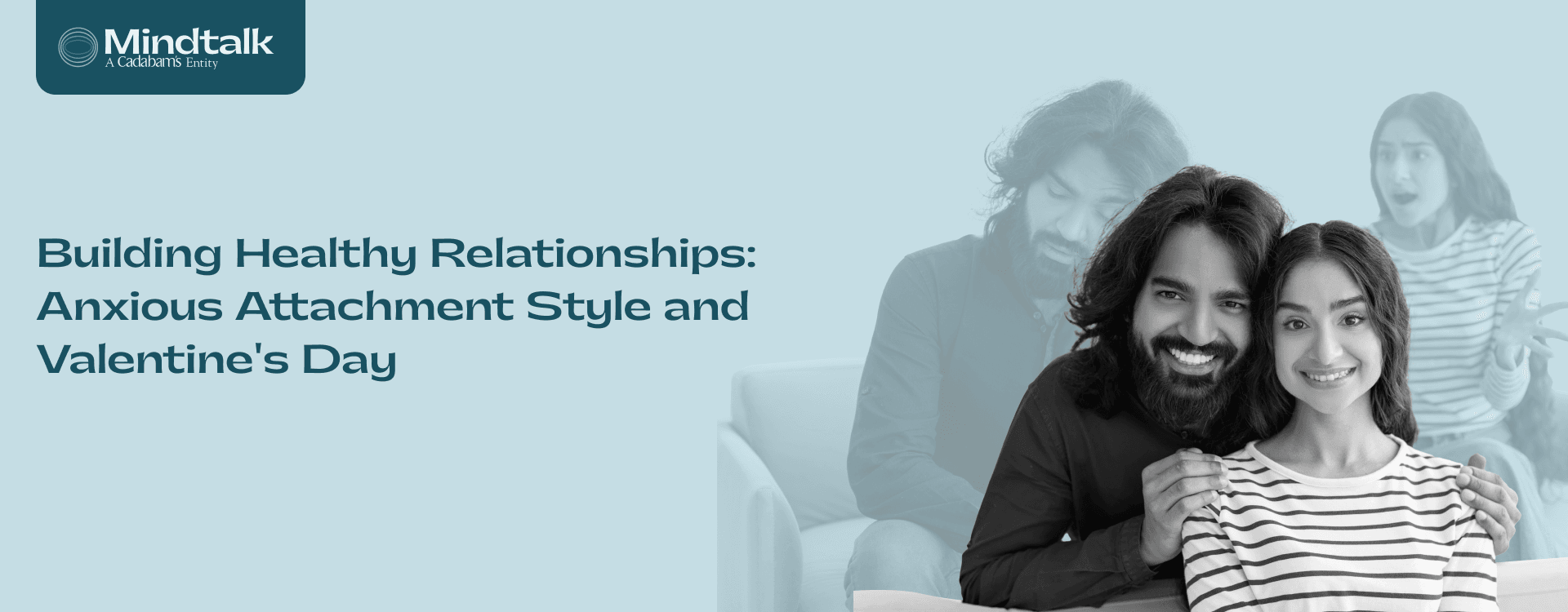Nurturing Healthy Relationships And Understanding Anxious Attachment Styles

Do you ever find yourself constantly worrying or craving reassurance from your partner? These feelings might be linked to anxious attachment styles. Healthy relationships make people happy and keep them healthy mentally and physically. By nurturing healthy relationships, individuals feel secure in their relationships. People with anxious attachment styles experience challenges navigating their relationships. Individuals with such issues need to briefly understand the challenges along with the condition, which can help them build a secure and healthy connection.
The Foundations Of Healthy Relationships
To lay a strong foundation for healthy relationships to blossom. To create a stable, supportive, and fulfilling bond, couples need to work on the core elements like honesty, respect, trust, effective communication, healthy boundaries, emotional intimacy, and support. These elements will help an individual build a healthy bond and lead a life filled with love and intimacy.
Key Characteristics Of Healthy Relationships
Each relationship is unique in its own way, but certainly, some key characteristics of a healthy interpersonal connection differentiate it from an unhealthy bond.
Building Trust
Trust is one of the crucial components of fostering healthy relationships. An individual's attachment style directly influences their ability to trust someone. Past relations shape an individual’s future relationships. An unstable and undependable one would create trust issues.
Embracing Openness and Self-Disclosure
With growing relationships, couples reveal more about themselves, which leads to deeper connections. Self-disclosure is important, as hiding aspects of yourself or changing who you are can one day mount up to bigger issues in the future. Fostering openness allows the relationship to be built on the truth.
Establishing Healthy Boundaries
Healthy boundaries depict that each person has their own needs and expectations; it’s not at all about keeping secrets. They provide a road map to what each requires in a relationship, all while respecting their privacy, like giving each other personal space and time.
Fostering Mutual Respect
Couples in healthy relationships share the same level of respect for each other. To support and provide security, they don’t belittle or demean one another. They do this by being understanding, not procrastinating, showing gratitude, respecting their individuality, and supporting one another.
Nurturing Love And Affection
A relationship grows with affection, trust, intimacy, and commitment. The initial spark in a relationship dies down with time, but couples fostering healthy relationships build deeper intimacy. Each individual's need for affection or love differs, and both partners need to feel content with the level of affection.
Enhancing Communication Skills
All relationships need the skill to communicate effectively, as it enables them to avoid conflict and resolve differences. Healthy relationships with constructive communication go a long way as partners respect each other and discuss their feelings and thoughts, avoiding disagreements.
Balancing Give-And-Take
Give-and-take isn’t about contributing equally in a relationship; it’s about things couples do for each other with genuine feelings. One might need more support, while the other wants to take on the role of a caregiver. This imbalance is not concerning if both partners are getting the support they require.
The Role Of Mutual Support And Understanding
Mutual support and understanding go hand in hand, all while fostering connection and intimacy to build a strong foundation. These two elements help build trust, intimacy, resilience, and personal growth. A partner’s unwavering support and understanding lead to a deeper connection. Facing various challenges together strengthens the ability to overcome obstacles. Providing support creates a safe environment for couples to grow and explore.
Understanding Anxious Attachment Styles
People who show anxious attachment styles fear being abandoned, mistrusted, and having low self-esteem; they fail to feel secure in any relationship. Generally, an attachment style develops in childhood, but later on, it can affect romantic relationships. Understanding the consequences of attachment styles on intimate relationships can help identify the patterns and resolve them.
Different Attachment Styles
Attachment styles are differentiated by the behaviors expressed by an individual in a relationship. For example, an individual may openly share and seek support in a secure attachment style. On the other hand, an individual with insecure attachment shows needy tendencies. There are two types of attachment styles: secure and insecure. Under insecure attachment, there are three sub-categories.
Secure Attachment
People with secure attachments feel safe, stable, and satisfied in a relationship without the fear of being alone. An individual with this type of attachment also faces conflicts, but they feel secure enough to take responsibility for their mistakes and seek help and support if required.
Anxious Attachment
Also known as ambivalent attachment style, where individuals show overly clingy tendencies. They often feel anxious or uncertain and lack self-esteem in a relationship; they crave intimacy but fear being abandoned or mistrusted. They struggle to fully rely on their partner.
Avoidant Attachment
This style of attachment is exactly the opposite of the anxious attachment style. Individuals who experience avoidant attachment don’t crave intimacy but rather avoid any emotional connection. They value their freedom and independence so much that they detest closeness in relationships.
Fearful Avoidant Attachment
It is also known as disorganized/disoriented attachment, which arises from intense fear. This extreme style makes individuals feel they are not worthy of love or closeness in any relationship. They fail to self-soothe their emotions, causing them distress.
Identifying Anxious Attachment In Adults
Signs to look for anxious attachment styles:
- Disregarding one's own needs over one's partner’s
- A constant need for validation
- Overly sensitive to potential threats to the relationship
- Rejection and abandonment anxiety
- Feeling jealousy and questioning their partner’s behavior
- Struggles with independence and ignores personal boundary
- Struggle with emotional expression and managing the intense emotions of their partner
- Always on the edge and constant worry
By identifying these behaviors in an individual, one can work towards developing a more secure relationship and overcome the challenges related to it.
The Impact Of Anxious Attachment On Relationships
Their excessive desire for attention and intimacy reflects the way they were treated in their childhood, which made them believe their needs were unimportant. They are highly sensitive to their partner’s needs and are ready to cater to them. They always project their uncertainties onto their partners’ behaviors, and when unmet, they feel unwanted. The fear of being abandoned and rejected makes them hypervigilant about potential relationship threats, and craves constant validation. However, having an anxious attachment person as a partner makes an individual feel comfortable.
Strategies For Overcoming Anxious Attachment In Relationships
There are various strategies that individuals with anxious attachment issues and their partners can adopt to build healthier and more secure connections. Understanding the challenges of anxious attachment and identifying the root causes can help in developing coping strategies.
Building Trust And Security
Building trust and security will reduce the fear of abandonment and promote secure communication. It will also encourage developing healthy boundaries and increase self-confidence to a certain level. To develop trust and security in a relationship, one must practice consistent and reliable behaviors and communicate openly with honesty. Respect each other’s boundaries while being mindful of the partner’s needs. Appreciate and acknowledge your partner’s efforts and contributions.
Effective Communication Techniques
Adaptation of effective communication techniques can simplify various challenges faced by an individual with an anxious attachment style. Communication issues lead to misunderstandings, which later turn into conflict. Strategies like active listening, clear and direct communication of feelings, avoiding assumptions and demands, and healthy conflict resolution are a few techniques that can make communication effective between two individuals.
Seeking Professional Help And Support
Navigating an anxious attachment style to secure attachment can be a daunting task. Seeking professional help and support can help navigate the journey towards secure and fulfilling relationships. It’ll help couples gain insights and understand the root causes of anxious attachment. The therapist will help develop healthy coping mechanisms and build self-awareness. They’ll teach effective communication skills and how to address a conflict.
Building Strong Connections With An Anxious Attachment Style
Being in a relationship with an anxious attacher, you need to keep a few things in mind to foster healthy relationships. Individuals with anxious attachment don’t always cling to their partner. The first thing is to educate yourself about anxious attachment style and the triggers, which help you and your partner understand behavior patterns and reduce unpredictability. Bridge the gap by implementing effective communication. Individuals with this issue struggle to identify their needs and emotions; keeping those emotions in check can avoid tension. Try therapy if managing the traits is becoming difficult.
How Can One Love Someone With An Anxious Attachment Style?
Having an anxious attachment partner can make it difficult for an individual to deal with their behavior patterns. Here are a few tips that can help both individuals in a relationship:
- Establish healthy boundaries by having open and clear conversations about each other’s needs and desires.
- Seek professional help if your partner faces difficulty in managing intense emotions.
- Try to be consistent with your approach because inconsistent behavior can trigger an anxious attachment partner.
- Actively listening to their concerns and allowing them to convey their struggles will help them identify the issues in their behavior.
Build Healthy Relationships And Manage Anxious Attachment With The Help Of Mindtalk.
Healthy relationships are the source of constant happiness, and they help maintain the overall well-being of an individual. While the struggles of individuals with anxious attachment styles are real, it’s also true that they can build a secure relationship. They just need the right partner and a little help and guidance from a professional. We at Mindtalk understand the intricacy of the issue and teach individuals healthy coping mechanisms to manage their negative behavior patterns. Our professionals can help your anxious attachment turn into a secure attachment.
Mental Health Professional For Anxiety



